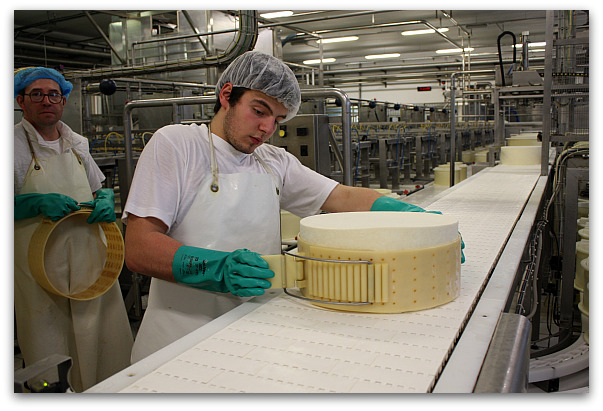The technical policies of the PDO (Protected Designation of Origin) production indicate in a detailed way the working procedures of fresh and aged Asiago cheese. Just like in the kitchen a well-made recipe depends on the skills of a good chef, in a dairy farm it's the cheesemakers who determine the success of the cheese.
Asiago cheese processing
Fresh Asiago cheese is obtained from the processing of whole cow's milk, while for aged Asiago cheese skimmed cow’s milk is used with the outcrop method. In both cases, the milk is placed in a boiler with rennet. The curd is cut up to obtain grains as large as nuts for the fresh Asiago cheese and smaller ones for the aged Asiago cheese. The curd is then partially cooked at 44 ° C, for the fresh Asiago cheese and at 47 ° C, for the aged Asiago, and placed on a processing table.
Numbered casein plates are applied consecutively on the dough that is put into shape when it is still warm. The fresh Asiago cheese is pressed for a few hours, they are then put into molds which imprint the PDO brand on the edge. The cheese is kept for at least two days in a temperature of 10-15 °C and at 80-85% humidity. It is checked and then dry salted or salted in brine and is then ready for aging.

